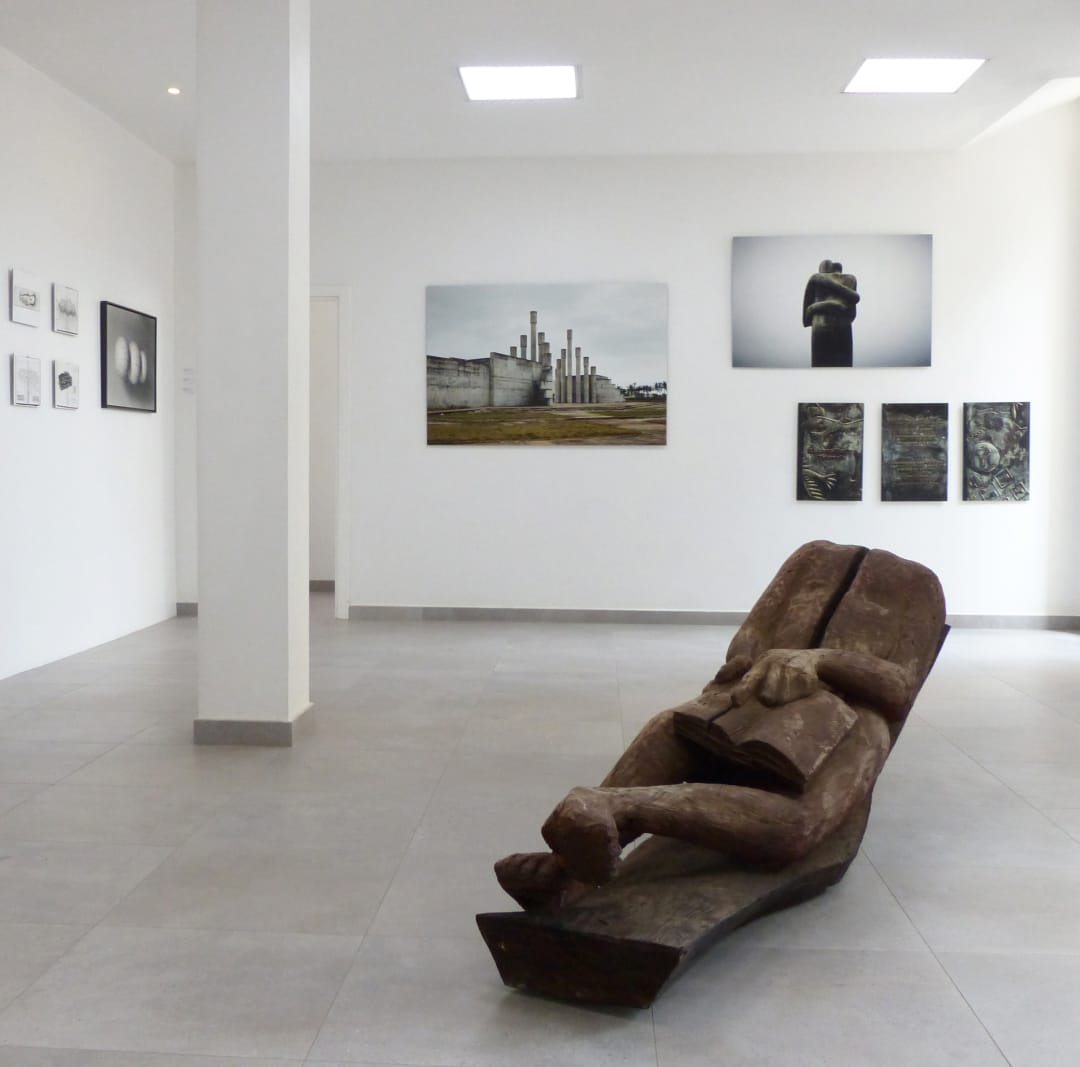L'Esprit du large (The Spirit of the open sea) is an invitation to see far away, to widen our horizons and knowledge, and to trade at the crossroads. In the exhibition, the artworks commingle without imposing any order; they converse at the discretion of the artists' imaginations. From one to the other, they suggest new itineraries.
At the very first notes of this visual symphony, the acrylic paintings of Vincent Michéa revive a Dakar fever not so far away. The bands Orchestra Baobab and L'Etoile de Dakar formed in the 1970's evoke a musical history of a multicultural Senegal. Vincent Michéa has been depicting vinyl covers for several years. The artist has gradually composed a visual anthology of West African music; through the personal history of his encounters and fondness for this music, he has managed to document a pop culture craze whose particular segments have now disappeared.
The paintings of Dalila Dalléas Bouzar impose themselves with the confidence of a choreography performed a thousand times. Ceremonial parades - incantatory or warlike - chant cogently the might of the female body. The skies, prey to their own mood, overhang each silhouette, they appear as extensions of these witch-warrior souls. The gestures of their choreography are depositories of an ancestral knowledge. Through her work Dalila Dalléas Bouzar questions the codes of representation in painting and consistently reintroduces dissident figures of a vernacular history.
Composed of enigmatic images, François-Xavier Gbré's series of photographs taken in Benin in 2012 celebrates the ambiguous power a symbol of memory can hold. The statue of Reconciliation in Cotonou, located on the esplanade of Porte du Non Retour (Door of no return) embodies the responsibility of governments in the triangular trade. Two similar statues exist in the world, in Liverpool (United Kingdom) and Richmond (United States), thus mapping out a physical and symbolic geography. From remnants of colonial times to landscapes altered by current events, François-Xavier Gbré explores territories and revisits history.
Dimitri Fagbohoun's rounded letters and soft neon lights could make his work pass for a decorative object if the inscribed word was not so loaded with history. Nègre (Negro) stands here as a familiar neon sign belonging to a business from the era of contemporary globalization whose soft and polished forms might seduce while the substance remains ruthless. Exorcizing the weight of history by articulating the word Negro and turn it into a rich semantic tool to heal a contemporary identity. Dimitri Fagbohoun expresses a relationship to a history in which his writings disturb the models that make it up.
With his piece Travel through the night, Ouattara Watts plunges us into his fascination with the color black. Black as night, black as half of the canvas, a black from which emerges a series of symbols and signs. Numbers, shapes, but also textures and fabrics constitute the artist visual language. Each painting is a dynamic microcosm, a partition of cultures that constitute his universe in negative format: jazz music, African traditions and rituals, Abjad numerals and Hebrew Gematria just to cite a few of his influences. Through his painting, Ouattara Watts explore the spiritual connections that transcend geography and nationalities.
With his cloud machines, Yo-Yo Gonthier attempts to take us elsewhere, to figuratively take off. In his approach to his work, the border between elements is often fluid: the marine animal becomes the inspiration for a flying machine. His photographs are notebooks, and then models that suggest the idea of an artist-inventor whose vital function is to imagine other worlds. Both a photographer and a plastic artist, Yo-Yo Gonthier questions the erasure of memory in a western society where progress and technology seem to be essential values.
The headless sculpture by Jems Koko Bi lying on the board seems engrossed in the reading of a work. Get rid of the head that thinks, of the mind that rationalises and judges. Both a sculptor and a performer, Jems Koko Bi blends avant-garde influences with his resolutely African history.








